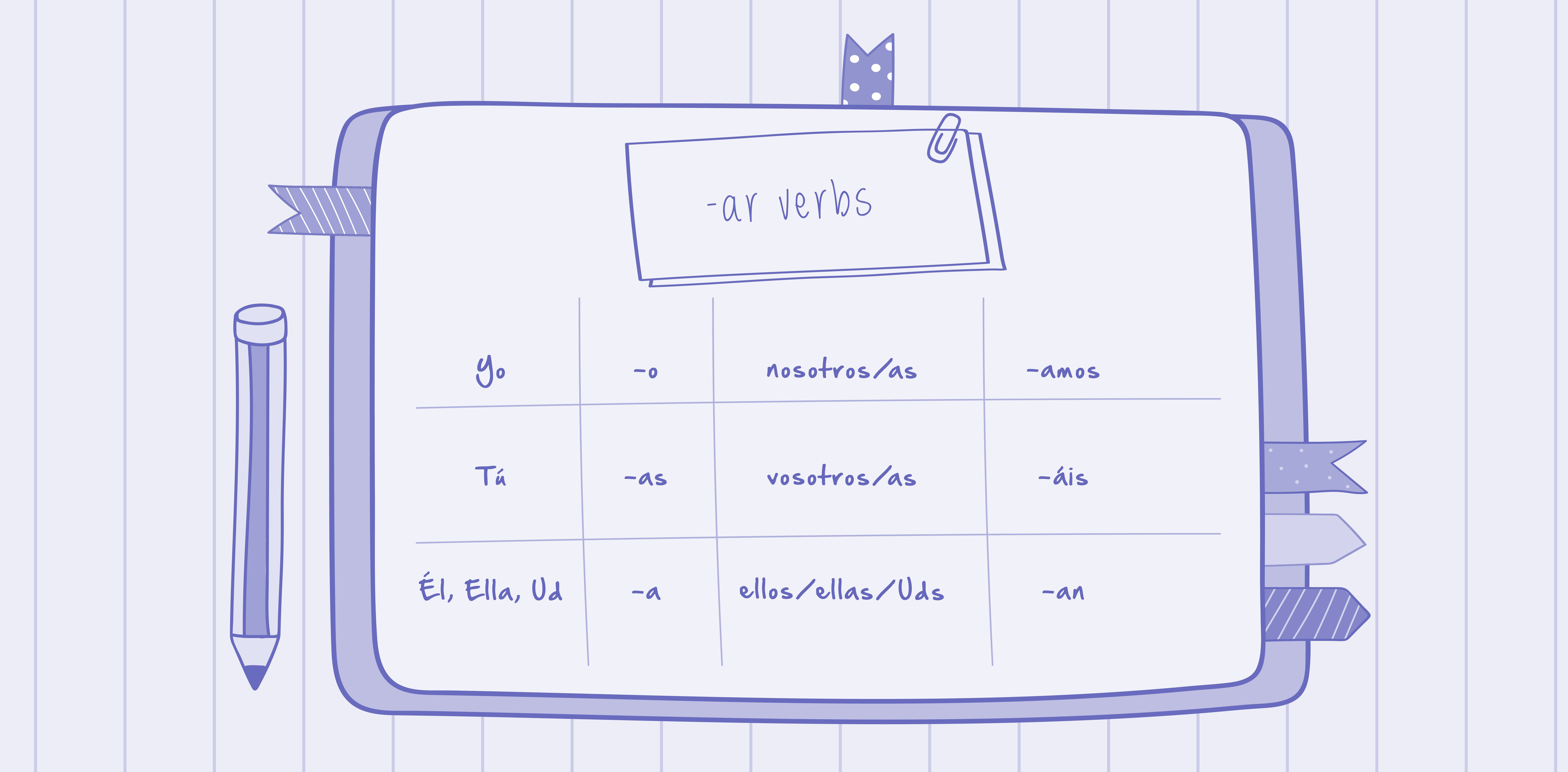
Have you ever found yourself lost in translation when trying to converse in Spanish, particularly with -ir verbs? Learning Spanish verb conjugation may seem like a daunting task, but it's crucial for mastering the language. These Spanish verbs are an integral part of everyday conversations and can open up a world of communication possibilities.
Imagine being able to confidently speak Spanish, effortlessly using -ir verbs in your sentences. Picture yourself navigating Spanish-speaking countries, engaging in fluid conversations with locals, and truly immersing yourself in the culture.
In this article, we’ll delve into the best methods to learn Spanish -ir verbs, providing you with practical tips, valuable resources, and effective learning strategies. So, fellow los estudiantes, let’s embark on this linguistic journey together and bring your Spanish skills to the next level!
Learn Spanish with Langster
What are IR Verbs?
Regular verbs are categorized as one of three types based on their infinitive endings: -ar, -er, and -ir. These endings are significant, as they form the basis for conjugation, enabling us to use the verb in different tenses and with various subjects.
Among these, -ir verbs constitute one of the main groups. They are verbs that, in their infinitive form, end with -ir. For example, the most ir verbs include the verb ir (go), vivir (to live), escribir (to write), and decidir (to decide).
Note that the Spanish verb ir itself is almost always followed by a to signify the direction — just like you’d put “to” after “to go” in English. Like in this sentence:
Spanish
English
Voy a la playa.
I’m going to the beach.
Understanding -ir verbs is essential, because they often have different conjugations from -ar and -er verbs. While some follow standard conjugation rules, there are many common irregular verbs that do not adhere to the typical patterns. This can make them tricky to learn, but with the right techniques and practice, you can master them effectively.
The Basics of IR Verbs

In Spanish, -ir verbs are one of the three main classes of verbs. As their name suggests, these verbs end in -ir in their infinitive form, such as vivir, escribir, and decidir.
Conjugating regular -ir verbs in the present tense involves removing the -ir ending and replacing it with the appropriate endings to match the subject pronoun. For example, to conjugate the verb escribir:
| yo escrib | I write |
| tú escribes | You (informal singular) write |
| él, ella, usted escribe | He, she writes; you (formal singular) write |
| nosotros, nosotras escribimos | We write |
| vosotros, vosotras escribís | You (informal plural) write |
| ellos, ellas, ustedes escriben | They write, You (formal plural) write |
| yo escrib | I write |
| tú escribes | You (informal singular) write |
| él, ella, usted escribe | He, she writes; you (formal singular) write |
| nosotros, nosotras escribimos | We write |
| vosotros, vosotras escribís | You (informal plural) write |
| ellos, ellas, ustedes escriben | They write, You (formal plural) write |
Irregular -ir verbs, on the other hand, do not follow this rule. They can change in the stem or in the ending when conjugated. For instance, the verb dormir (to sleep) changes its stem from o to ue in all forms except nosotros/nosotras and vosotros/vosotras:
| yo duermo | I sleep |
| tú duermes | You (informal singular) sleep |
| él, ella, usted duerme | He, she sleeps; you (formal singular) sleep |
| nosotros, nosotras dormimos | We sleep |
| vosotros, vosotras dormís | You (informal plural) sleep |
| ellos, ellas, ustedes duermen | They sleep, You (formal plural) sleep |
| yo duermo | I sleep |
| tú duermes | You (informal singular) sleep |
| él, ella, usted duerme | He, she sleeps; you (formal singular) sleep |
| nosotros, nosotras dormimos | We sleep |
| vosotros, vosotras dormís | You (informal plural) sleep |
| ellos, ellas, ustedes duermen | They sleep, You (formal plural) sleep |
Understanding the basics of -ir verbs is essential for mastering Spanish grammar. Regular practice and exposure to these verbs in context can significantly improve your ability to use them correctly and confidently.
How to Conjugate IR Verbs in Different Tenses

Embarking on the journey to master a new language involves tackling its grammar, and verbs are a fundamental part of this process. In Spanish, one of the critical types of verbs we encounter is the -ir verbs.
To illustrate -ir verbs in different tenses, let's use the regular verb vivir (to live) as an example in the first, second, and third person conjugations.
Present Tense
| Vivir | to live |
| yo vivo | I live |
| tú vives | you live |
| él, ella vive | he, she lives |
| nosotros, nosotras vivimos | we live |
| ellos, ellas, ustedes viven | they, you all live |
| Vivir | to live |
| yo vivo | I live |
| tú vives | you live |
| él, ella vive | he, she lives |
| nosotros, nosotras vivimos | we live |
| ellos, ellas, ustedes viven | they, you all live |
Past Tense
| yo viví | I lived |
| tú viviste | you lived |
| él, ella vivió | he, she lived |
| nosotros, nosotras vivimos | we lived |
| ellos, ellas, ustedes vivieron | they, you all lived |
| yo viví | I lived |
| tú viviste | you lived |
| él, ella vivió | he, she lived |
| nosotros, nosotras vivimos | we lived |
| ellos, ellas, ustedes vivieron | they, you all lived |
Future Tense
| yo viviré | I will live |
| tú vivirás | you will live |
| él, ella vivirá | he, she will live |
| nosotros, nosotras viviremos | we will live |
| ellos, ellas, ustedes vivirán | they, you all will live |
| yo viviré | I will live |
| tú vivirás | you will live |
| él, ella vivirá | he, she will live |
| nosotros, nosotras viviremos | we will live |
| ellos, ellas, ustedes vivirán | they, you all will live |
Introduction to Irregular IR Verbs

Irregular -ir verbs, both in Spanish and French, are a unique category that doesn't follow the standard conjugation rules. This can make them somewhat challenging for language learners. However, understanding these irregularities is crucial for mastering these languages, just as it is with irregular English verbs.
In Spanish, examples of irregular -ir verbs include:
Spanish
English
dormir
to sleep
mentir
to lie
partir
to leave
servir
to serve
salir
to go out
These verbs undergo changes in their stems when conjugated, which sets them apart from regular -ir verbs. Just as with English verbs, the key to mastering irregular -ir verbs in Spanish lies in practice and familiarity.
Regular exposure to these verbs in context, such as through reading, listening, and speaking exercises, can greatly enhance your understanding and usage of these verbs.
So, while irregular -ir verbs may initially seem daunting, remember that even in English, we regularly use and encounter irregular verbs. With time and practice, navigating these irregularities in any language becomes second nature.
Conclusion

Venturing into the realm of a new language, with its unique verbs and conjugations, is akin to setting sail on an exhilarating voyage. It can sometimes pose challenges, notably for English speakers grappling with Spanish -ir verbs, given their diverse forms, irregularities, and stem changes.
However, it's crucial to remember that stumbling and making mistakes are not just normal but an integral part of this learning journey.
The secret to mastering Spanish -ir verbs lies in consistent practice, recognizing common patterns, and staying alert to the exceptions. Leveraging modern tools, such as language apps like Langster, immersing yourself in conversations with native speakers, and ensuring continual practice can significantly boost your proficiency with -ir verbs.
Keep pushing forward, and before long, you'll find yourself conversing confidently and accurately in Spanish!
Learn Spanish with Langster









